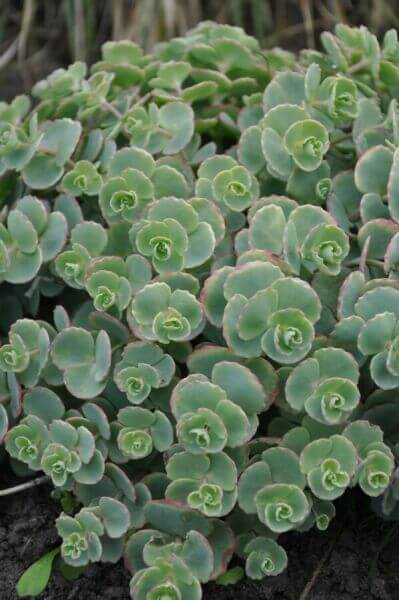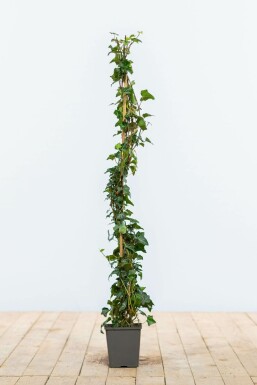Hedge Plants For Decorative Landscaping
Hedge Plants For Decorative Landscaping
Blog Article
Best Hedging Plants For Informal Landscaping
Boost your garden's attraction with rich hedge ranges such as Yew (Taxus), Thuja, Laurel, Photinia, and Bamboo, celebrated for their structural stability and ecological advantages.
Yew and Thuja provide evergreen protection and winter season durability, while Laurel uses fast development and broad, aromatic leaves.
Photinia adds seasonal appeal with its vibrant red foliage, and Bamboo provides a low-maintenance, tranquil ambiance.
These hedges enhance air quality, lower noise, and produce tranquil, personal areas.
Proper planting, spacing, and upkeep ensure energetic development and ecological consistency.
Check out how these rich ranges can raise your garden's beauty and well-being.
Secret Takeaways
Transform Your Garden With Lush Hedge Ranges
- Select Yew for its dense, evergreen development and exceptional durability.
- Opt for Laurel for its fast development and broad leaves, guaranteeing fast personal privacy.
- Select Photinia for its lively seasonal foliage, which turns a striking dark red.
- Utilize Bamboo for a low-maintenance, winter-hardy hedge with aesthetic appeal.
- Area plants 2-3 per meter and prune regularly for ideal growth and health.
Popular Hedge Plants
When changing a garden with lavish hedge varieties, it's important to consider popular hedge plants such as Yew, Thuja, Laurel, and Photinia due to their unique characteristics and benefits.
Yew (Taxus) is extremely esteemed for its durability and dense, green growth, making it a prime choice for withstanding landscapes.
Thuja is kept in mind for its evergreen foliage and robust winter season durability.
Photinia adds seasonal vibrancy with red leaves that darken gradually, producing vibrant visual appeal.
Laurel uses quick growth and fragrant, broad leaves, suitable for fast personal privacy.
In Addition, Bamboo is an excellent option for atmosphere, providing a low-maintenance, winter-hardy alternative that enhances the garden's aesthetic with its classy, swaying walking sticks.
These choices accommodate a variety of horticultural needs and preferences.
Advantages of Garden Hedges
Garden hedges provide a plethora of advantages, making them a valuable addition to any landscape. These natural barriers are cost-effective to implement and supply considerable wind protection, boosting air blood circulation and contributing to sound reduction. The thick foliage of hedges like Thuja and Beech guarantees privacy by blocking exposure, producing a peaceful and secluded environment.
Hedges likewise play a vital function in microclimate policy, supplying a stable environment that fosters plant development and decreases temperature level variations. Their complex leaf structures filter pollutants, enhancing air quality and contributing to a much healthier garden community.
Moreover, hedges master noise decrease, absorbing and deflecting acoustic waves to lower ambient noise levels. This dual functionality of offering both acoustic and visual privacy improves the overall serenity and visual appeal of any garden.
Planting and Upkeep Tips
For a successful hedge, careful preparation of the planting area is important. Ensure the soil has proper pH and drain to support strong root development.
Area the plants properly for the chosen types. Water the hedge regularly during its preliminary development phase, changing as needed with seasonal modifications.
Implement a methodical bug control and illness prevention technique, utilizing natural or chemical treatments when required. Routinely examine for aphids, termites, and fungal infections.
Apply mulch to retain moisture and suppress weeds. Seasonal pruning promotes dense growth and air flow, necessary for plant health.
Following these standards will help you cultivate a vibrant, well-kept hedge that improves the appeal of your garden.
Spacing and Cutting Standards
Spacing and Cutting Standards
Correct spacing and cutting are vital for cultivating healthy, aesthetically appealing hedges. Appropriate spacing makes sure each plant gets enough nutrients, light, and air flow.
Follow these standards for optimum hedge upkeep:
- Spacing: Position hedge plants 2-3 plants per meter to motivate robust development.
- Pruning Strategies: Routine pruning is vital for preserving preferred hedge height and shape. Trim new development in summer season and cut down older wood throughout winter season.
- Seasonal Care: Adjust trimming approaches and schedules according to seasonal requirements to make sure plant health.
- Hedge Height: Routinely monitor and trim to keep the wanted hedge height and accomplish uniform visual appeals.
Abiding by these actions will ensure your hedge thrives, boosting both the appeal and performance of your garden.
Choosing the Right Hedge
Picking the Right Hedge
Picking the suitable hedge involves examining elements such as mature height, foliage density, and ecological durability. Effective hedge plant choice requires comprehending each species' development qualities and site-specific adaptability.
For instance, Yew (Taxus) provides excellent durability and dense development, while Thuja is noteworthy for its winter strength. Additionally, thinking about maintenance requirements is vital; fast-growing species like Laurel or Privet need regular cutting, whereas low-maintenance choices like Bamboo or Ivy may be more effective for those seeking minimal upkeep.
Ecological factors such as soil type, light schedule, and moisture conditions need to also assist the selection process. This careful method makes sure the selected hedges will grow, offering both visual and practical advantages to the garden landscape.
Shipment and Planting Recommendations
To ensure your hedge plants thrive, they must be delivered by specialized carriers and planted immediately upon arrival.
Follow these essential steps for effective planting:
- Soil Preparation: Improve the soil with organic matter to enhance drain and nutrient material.
- Planting Depth: Develop a trench twice the width and equal to the depth of the root ball.
- Watering Strategies: Water completely after planting, keeping the soil consistently wet however not saturated.
- Mulching: Apply a layer of mulch to keep wetness and reduce weeds.
Consumer Support and Service
Provided the important function of prompt help in horticultural pursuits, our customer support team is readily available 6 days a week through telephone, email, and social media to offer expert recommendations and quickly attend to any issues. Their devotion to fast reaction times makes sure client fulfillment by solving questions related to plant health, optimal planting methods, and upkeep schedules.

Schedule
-----------------
Within 24 hours
This comprehensive support group, strengthened by an excellent 9.3/ 10 customer score, highlights our dedication to enhancing the gardening experience for each customer.
Often Asked Concerns
The Length Of Time Does It Take for Hedge Plants to Establish?
Hedge plants normally need one to 3 years to end up being fully established, with the exact duration varying by species and growing conditions.
Efficient care during this crucial period is important for robust growth. Consistent watering, alert weed control, and proper fertilizer application are essential in promoting strong root advancement.
For instance, fast-growing types like Laurel might establish quicker, while slower-growing varieties such as Yew may take longer. Diligent upkeep speeds up the establishment process, resulting in healthy and thick hedges.
What Are the Finest Hedge Plants for Privacy?
The question of the best hedge plants for personal privacy involves evaluating evergreen and deciduous choices.
Evergreen hedges like Thuja, Laurel, and Cypress offer year-round coverage, making sure constant privacy.
On the other hand, deciduous hedges such as Beech provide seasonal personal privacy, shedding leaves in colder months.
Secret maintenance suggestions for privacy hedges consist of routine trimming, fertilizing in spring, and appropriate spacing-- normally 2 to 3 plants per meter.
Additionally, constant watering and thorough weed removal are essential for promoting healthy, dense development.
Can Hedge Plants Draw In Wildlife to My Garden?
Yes, hedge plants can attract wildlife to your garden by offering important advantages like shelter, food, and nesting sites, therefore improving local biodiversity. For instance, yew, holly, and laurel are exceptional for attracting birds, while ivy supports a range of insects.
Nevertheless, it's important to keep in mind that there are some drawbacks, such as increased maintenance to handle pests and routine upkeep. Carefully picking and maintaining hedge ranges can assist stabilize these downsides and benefits, ultimately cultivating a dynamic and sustainable community in your garden.
Exist Any Blooming Hedge Plants Available?
Yes, there are flowering hedge plants available that can improve the beauty of your garden.
For example, Elaeagnus, likewise known as Olive Willow, produces fragrant white flowers in the fall, adding a touch of sophistication.
Photinia, another popular option, showcases vibrant red leaves that develop into an abundant green, creating a dynamic visual impact throughout the seasons.
To Additional reading guarantee these plants grow, it's essential to practice proper pruning methods and seasonal maintenance, such as cutting brand-new development in the summer season and cutting down in the winter.
These measures will help preserve the health and aesthetic appeal of your blooming hedges.
How Do I Prevent Insects in My Hedge Plants?
To prevent insects in hedge plants, utilize natural bug control approaches and maintain proper hedge care. Introduce advantageous bugs like ladybugs, which take advantage of hazardous insects, to produce a well balanced community.
Routinely examine your hedges for signs of invasion and immediately remove any affected parts to prevent the spread. Ensure the health of your hedges by using well balanced fertilizers and supplying sufficient water.
Use mulching to retain soil moisture and correct spacing to lower plant tension and promote robust growth. These practices collectively help in decreasing bug problems and preserving a healthy hedge.
Conclusion
In essence, choosing the ideal hedge ranges such as Yew, Thuja, and Laurel can transform any garden into a peaceful haven. These plants supply year-round plant, enhance visual appeal, and deal practical advantages like sound reduction and wind defense.
Appropriate planting methods, precise spacing, constant watering, and seasonal trimming are essential for ideal growth.
Reputable delivery services and skilled client assistance guarantee a seamless experience from purchase to planting, making it easier than ever to elevate your outdoor area.
Garden hedges offer a multitude of advantages, making them a valuable addition to any landscape. These natural barriers are cost-efficient to execute and provide substantial wind protection, boosting air circulation and contributing to sound reduction. The thick foliage of hedges like Thuja and Beech ensures privacy by blocking visibility, developing a serene and remote environment.

Pruning Strategies: Routine pruning is vital for maintaining desired hedge height and shape. Cut new growth in summer season and cut back older wood throughout winter.
Report this page